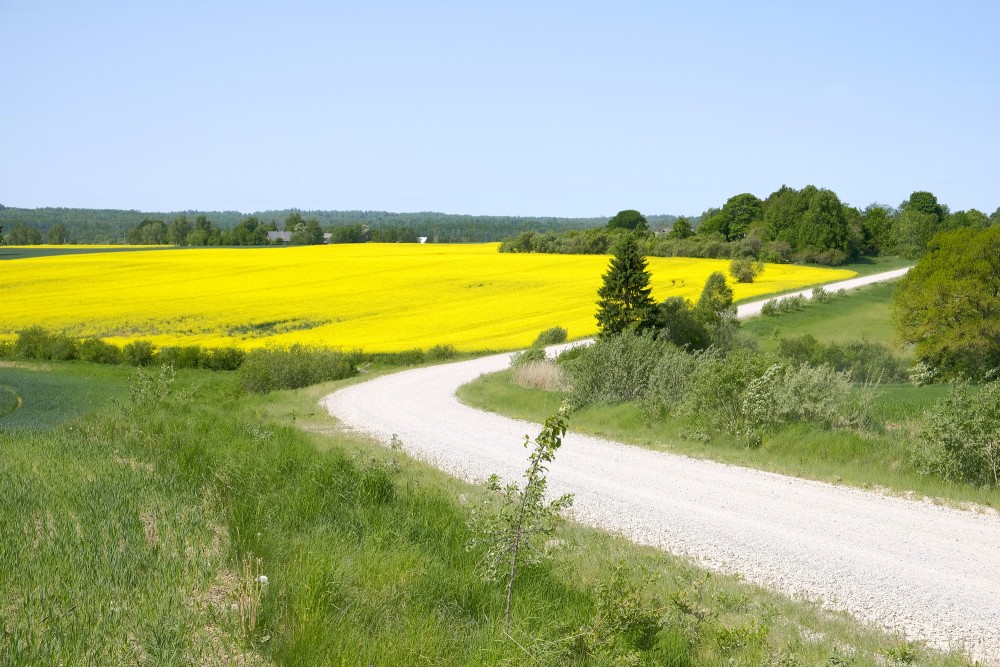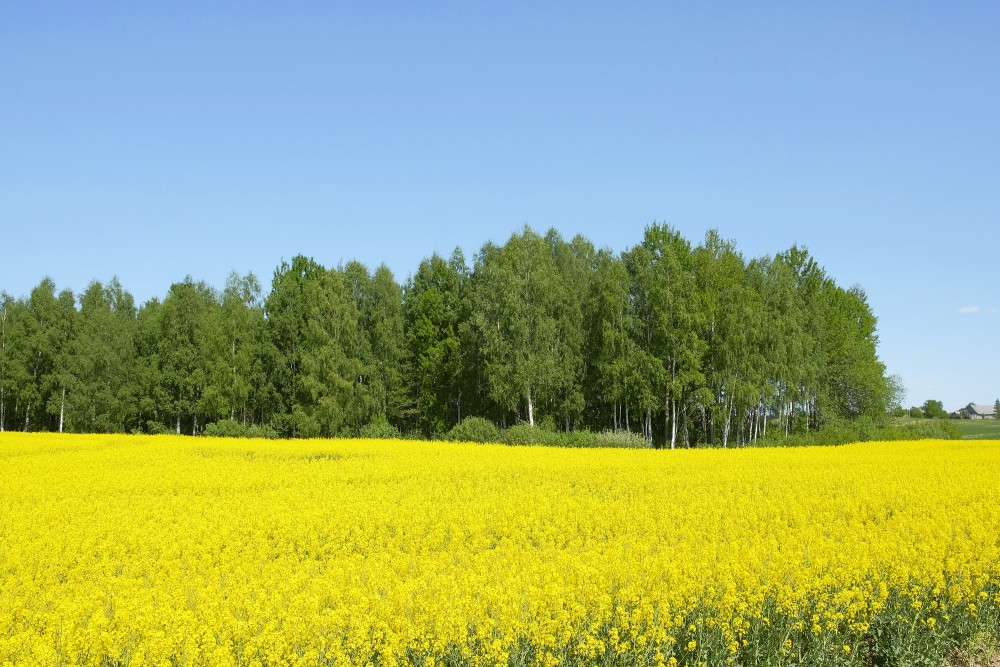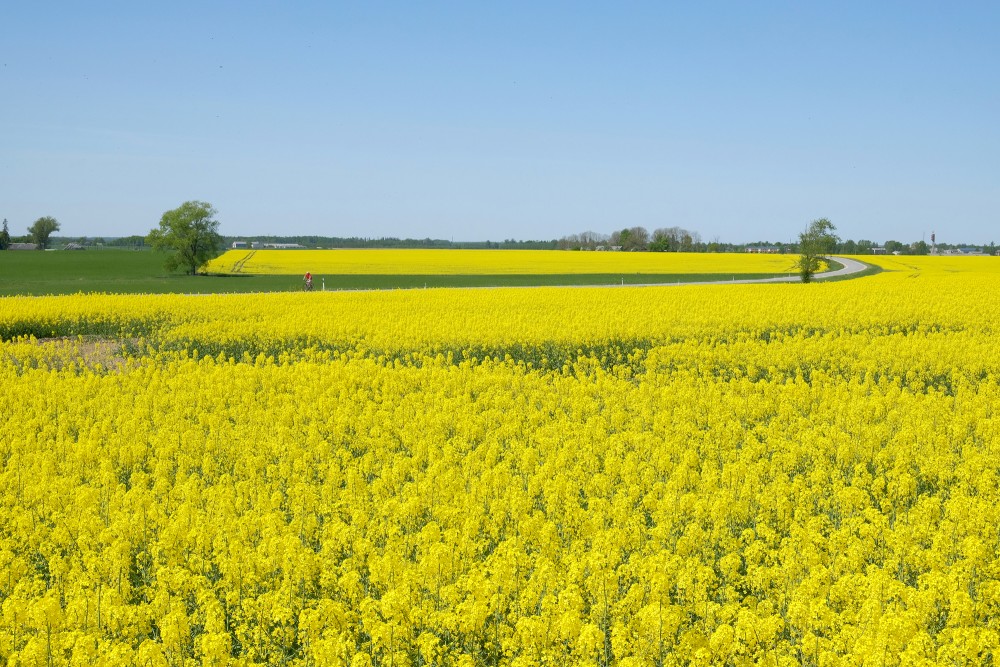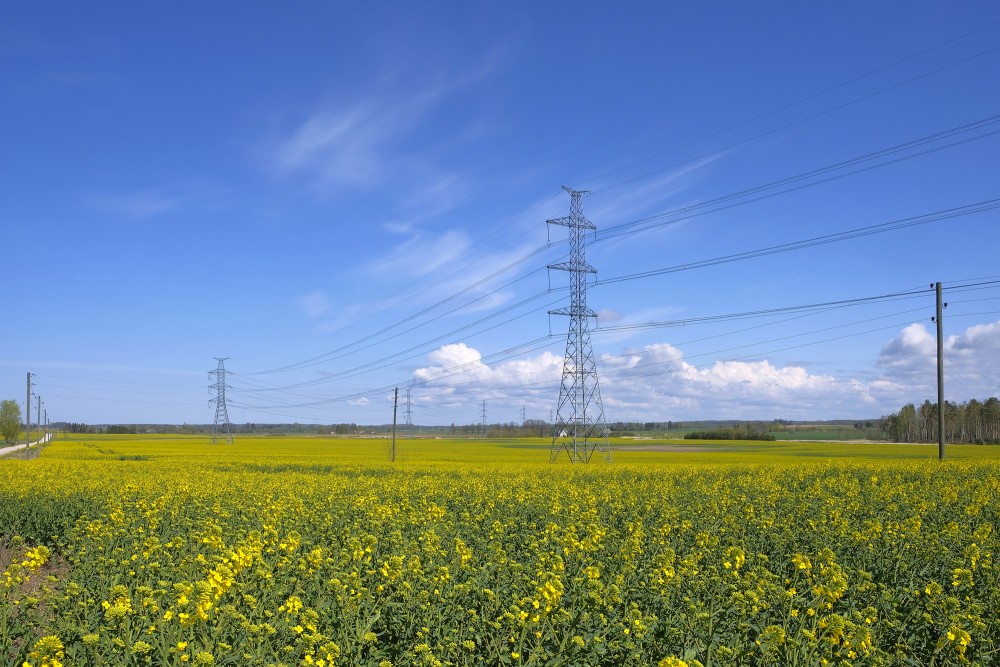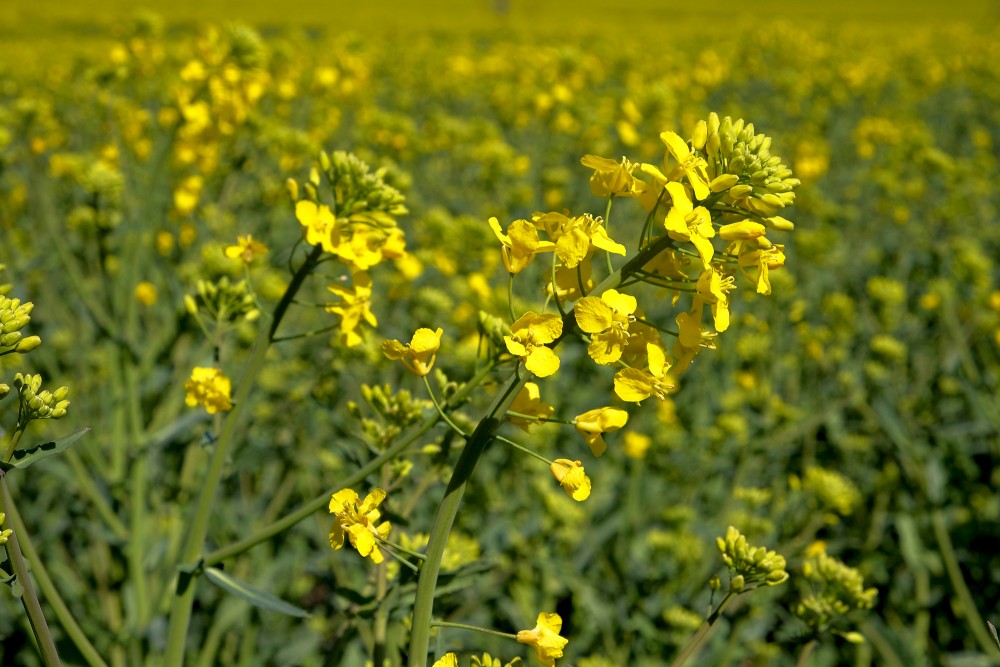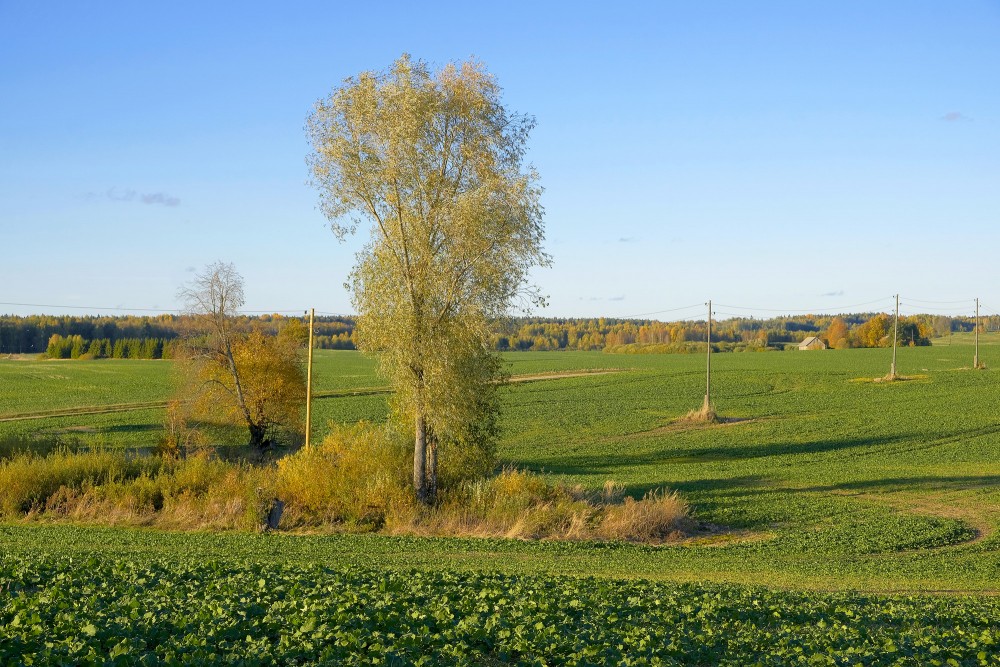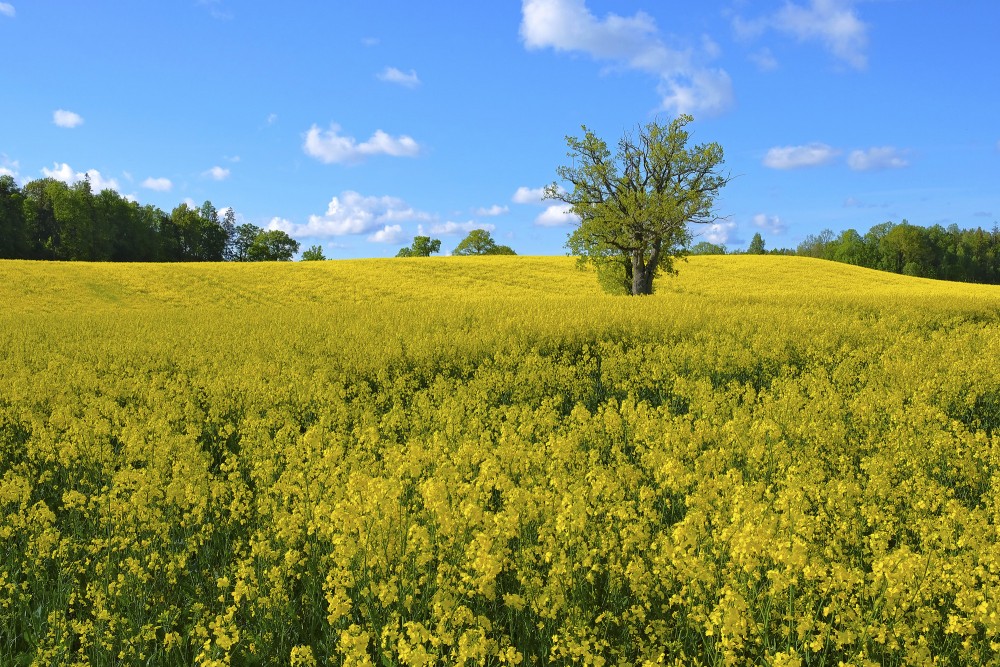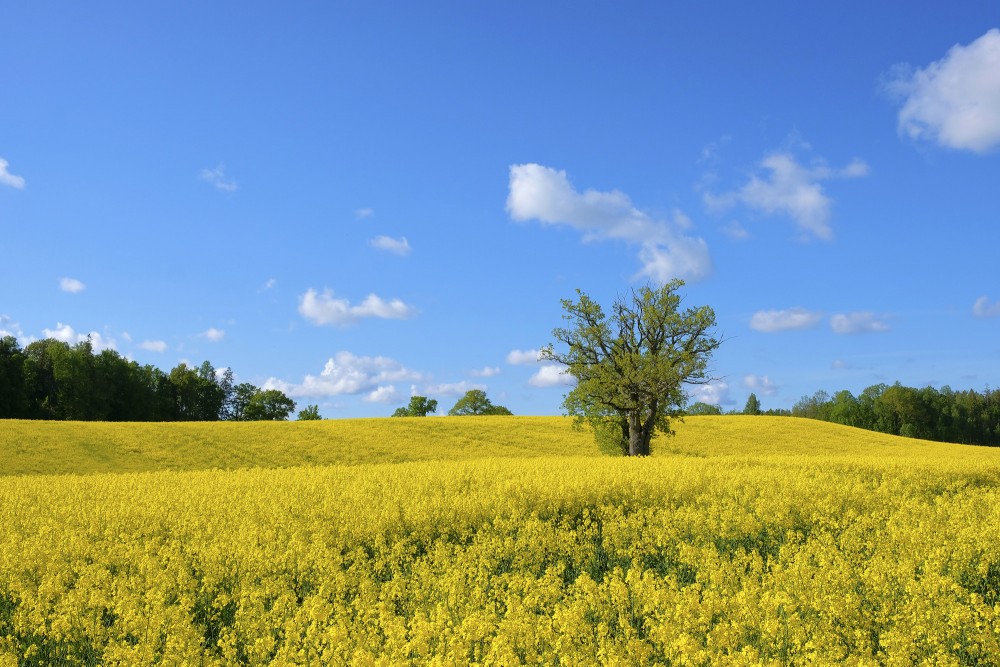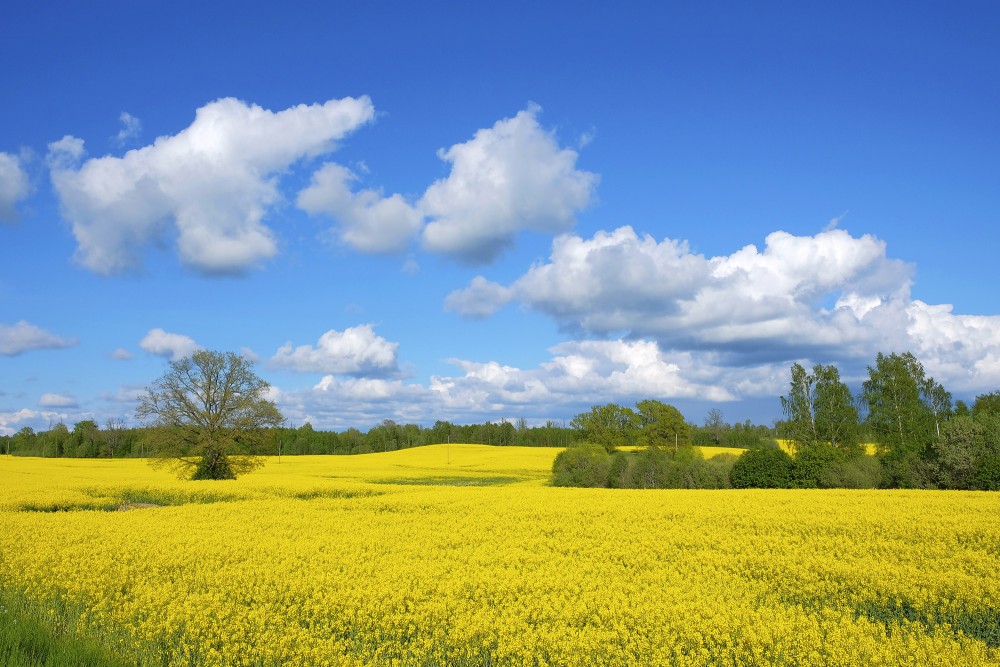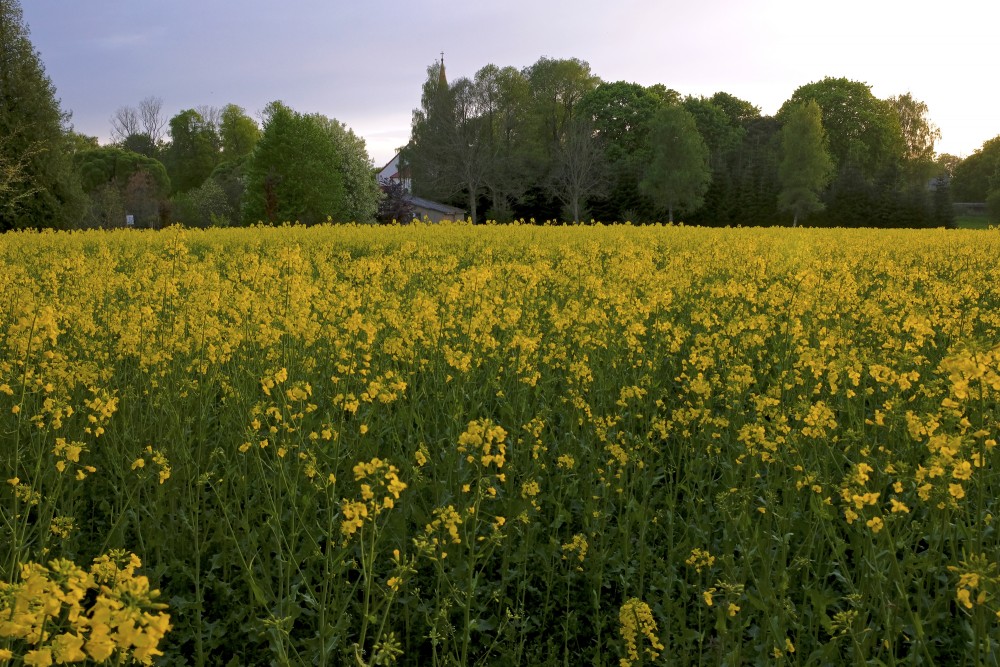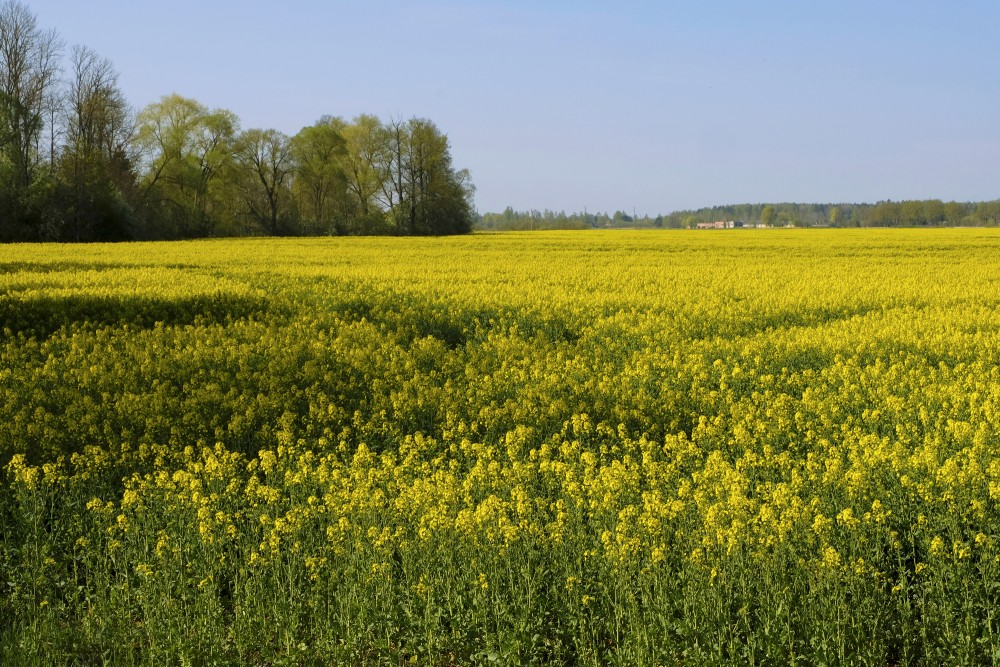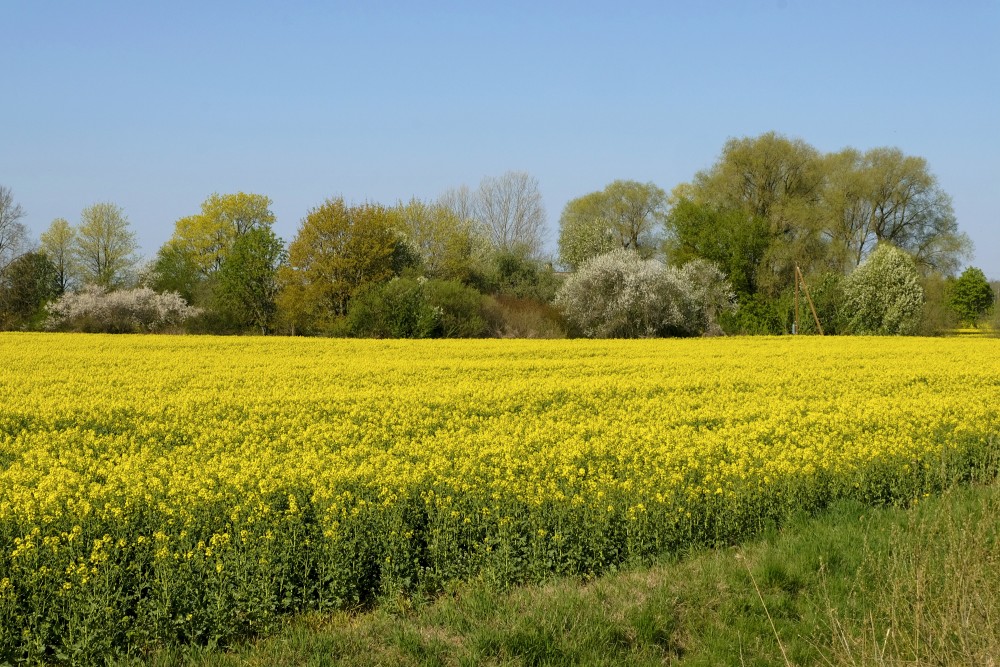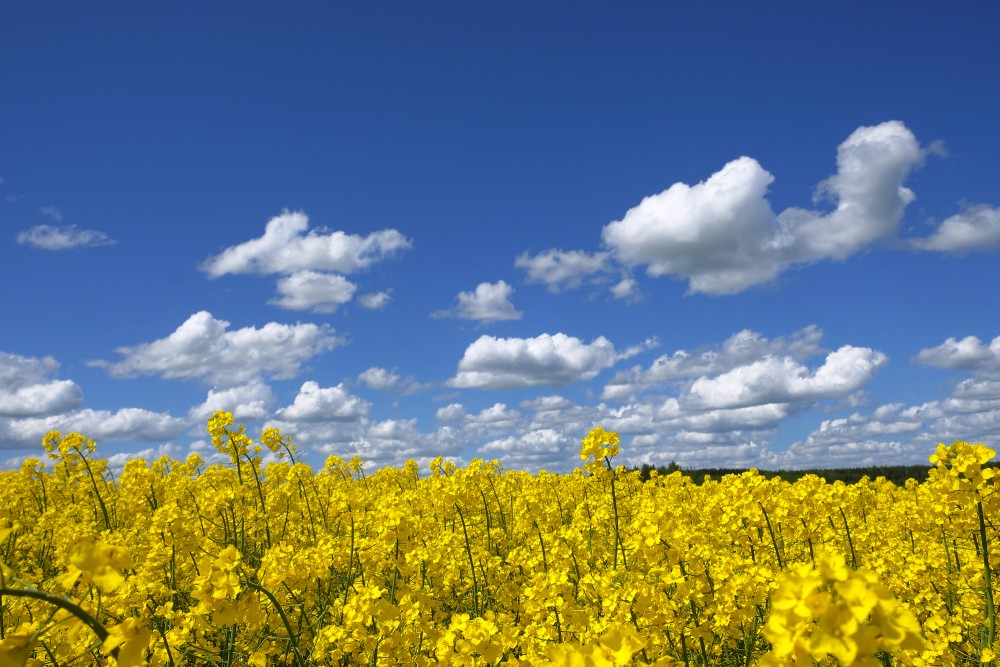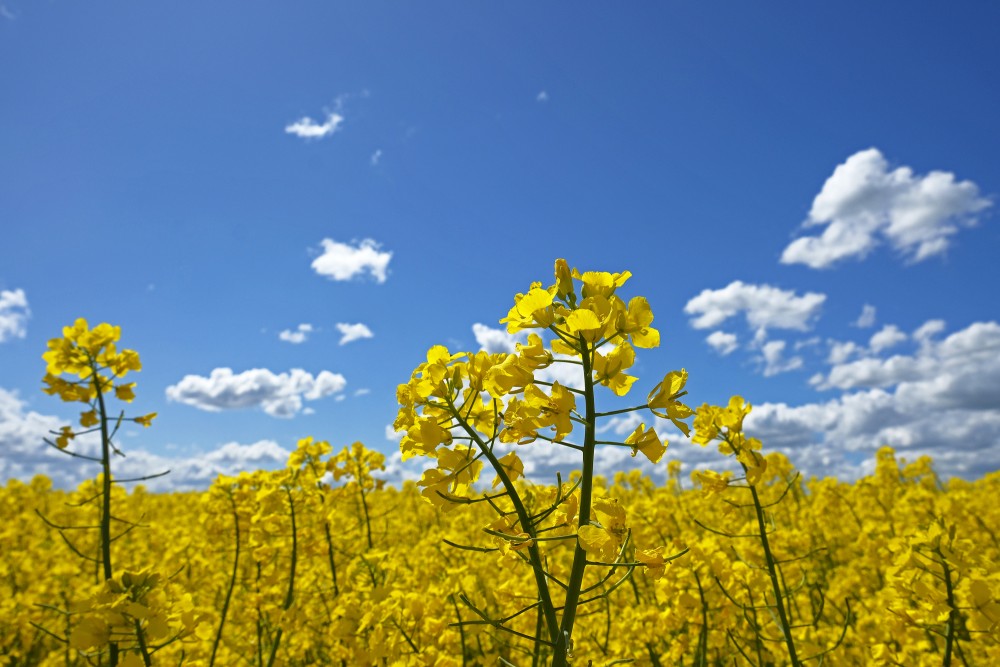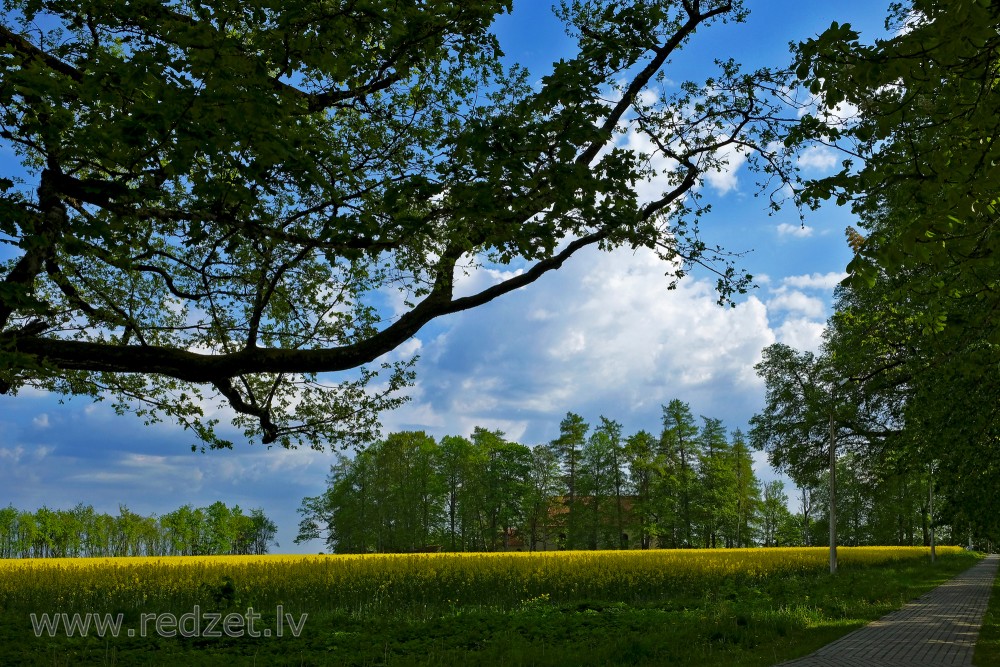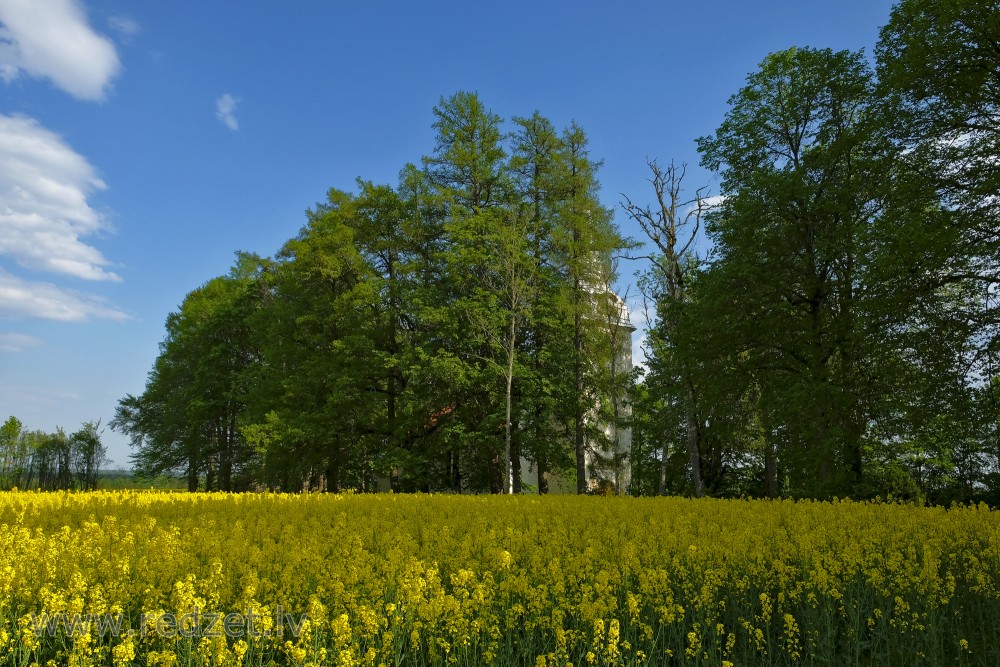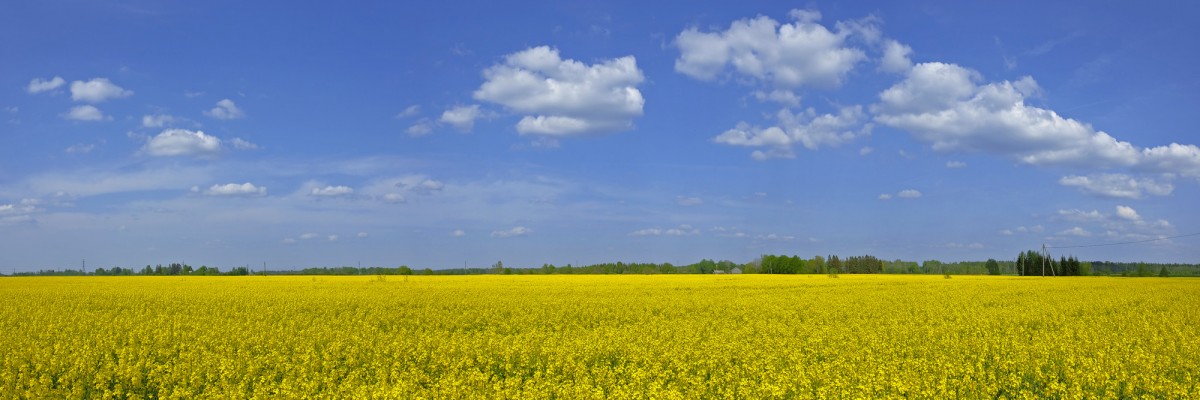Rape (Brassica napus)
Rape, (Brassica napus, variety napus), also called rapeseed or colza, plant of the mustard family (Brassicaceae), grown for its seeds, which yield canola, or rapeseed, oil. Canola oil is variously used in cooking, as an ingredient in soap and margarine, and as a lamp fuel (colza oil). The esterified form of the oil is used as a lubricant for jet engines and can be made into biodiesel. The seeds are also used as bird feed, and the seed residue after oil extraction is used for fodder. The plant can be grown as a cover crop and green manure.
www.britannica.com
The ancestor of rapeseed and swede is not known to grow ferally. It is believed to have originated relatively late in Europe, probably as a cross between wild cabbage (B. oleracea) and turnip mustard (B. rapa; see wild turnip), but it is unclear if swede was a prototype of rapeseed, or vice versa.
According to the way that it is used, rapeseed is an autumn or spring annual that is cultivated for its oil in temperate climates around the world. Finland constitutes rapeseed’s northern limit, and seeds that sprout in the autumn do not overwinter as well as turnip rape (Brassica rapa ssp. oleifera; also known as biennial turnip rape, canola, winter turnip rape): rapeseed’s delicate terminal bud sits slightly proud of the earth, but turnip rape’s is better protected, sitting snugly against the earth. On the other hand, spring rapeseed that is sown in the spring ripens so late in the autumn that the harvest cannot be guaranteed, unlike spring turnip rape. Rapeseed is grown for fodder rather than oil further north, and swede grows well even further up north.
Swede (also known as Swedish turnip, rutabaga or yellow turnip) is a biennial root vegetable that has been cultivated from 1600th century. Swede and rapeseed sometimes grow wild in Finland as escapes or aliens, most often close to cultivated land or in areas with lively traffic. It is also possible to find closely related turnip rape, whose lowest leaves are bright green and slightly hairy. It also has a slightly smaller flower and its buds open up underneath its flowers.
www.luontoportti.com
In 1973, Canadian agricultural scientists launched a marketing campaign to promote canola consumption.
Today, rapeseed is grown for the production of animal feed, edible vegetable oils, and biodiesel; leading producers include the European Union, Canada, China, India, and Australia. In India, 6.7 million tons are produced annually. According to the United States Department of Agriculture, rapeseed was the third-leading source of vegetable oil in the world in 2000, after soybean and palm oil. It is the world's second-leading source of protein meal after soybean.
The Food and Agriculture Organization reports 36 million tons of rapeseed were produced in the 2003–2004 season, and estimated 58.4 million tons in the 2010–2011 season. In Europe, rapeseed is primarily cultivated for animal feed, due to its very high lipid and medium protein content.
Natural rapeseed oil contains 50% erucic acid. Wild seeds also contain high levels of glucosinolates (mustard oil glucosindes), chemical compounds that significantly lowered the nutritional value of rapeseed press cakes for animal feed. In North America, the term "canola"—a contraction of Canada and ola, meaning oil — became widely used to refer to rapeseed, and is now a trade-name for "double low" (low erucic acid and low glucosinolate) rapeseed. The rapeseed is the harvested component of the crop. The crop is also grown as a winter cover crop. The plant is ploughed back in the soil or used as bedding. On some organic operations, livestock such as sheep or cattle are allowed to graze on the plants.
Processing of rapeseed for oil production produces rapeseed meal as a byproduct. The byproduct is a high-protein animal feed, competitive with soybean. The feed is employed mostly for cattle feeding, but also for pigs and chickens. The meal has a low content of the glucosinolates responsible for metabolism disruption in cattle and pigs. Rapeseed "oil cake" is also used as a fertilizer in China, and may also be used for ornamentals, such as bonsai.
Rapeseed produces great quantities of nectar, and honeybees produce a light-colored but peppery honey from it. It must be extracted immediately after processing is finished, because it will otherwise quickly granulate in the honeycomb and be impossible to extract. The honey is usually blended with milder honeys, if used for table use or sold as bakery grade.
Oilseed rape is partly self-fertile and is pollinated by wind, gravity, and insects. Insect pollination increases yield, but the effect is cultivar-dependent.
"Total loss" chain and bar oil for chainsaws have been developed which are usually 70% or more canola/rapeseed oil, although they are typically more expensive. Some countries, such as Austria, have banned the use of petroleum-based chainsaw oil. These "biolubricants" are generally reported to be functionally comparable to traditional mineral oil products, with some reports claiming one or other is superior, but no consensus is yet evident.
Rapeseed has been researched as a means of containing radionuclides that contaminated the soil after the Chernobyl disaster. Rapeseed was discovered to have a rate of uptake up to three times more than other grains, and only about 3 to 6% of the radionuclides go into the parts of the plant that could potentially enter the food chain. As oil repels radionuclides, canola oil free from contaminants being concentrated in other parts of the plant could be produced. The rest of the plant (straw, roots, seed pods, etc.) could then be recycled by ploughing back into the soil.
en.wikipedia.org




